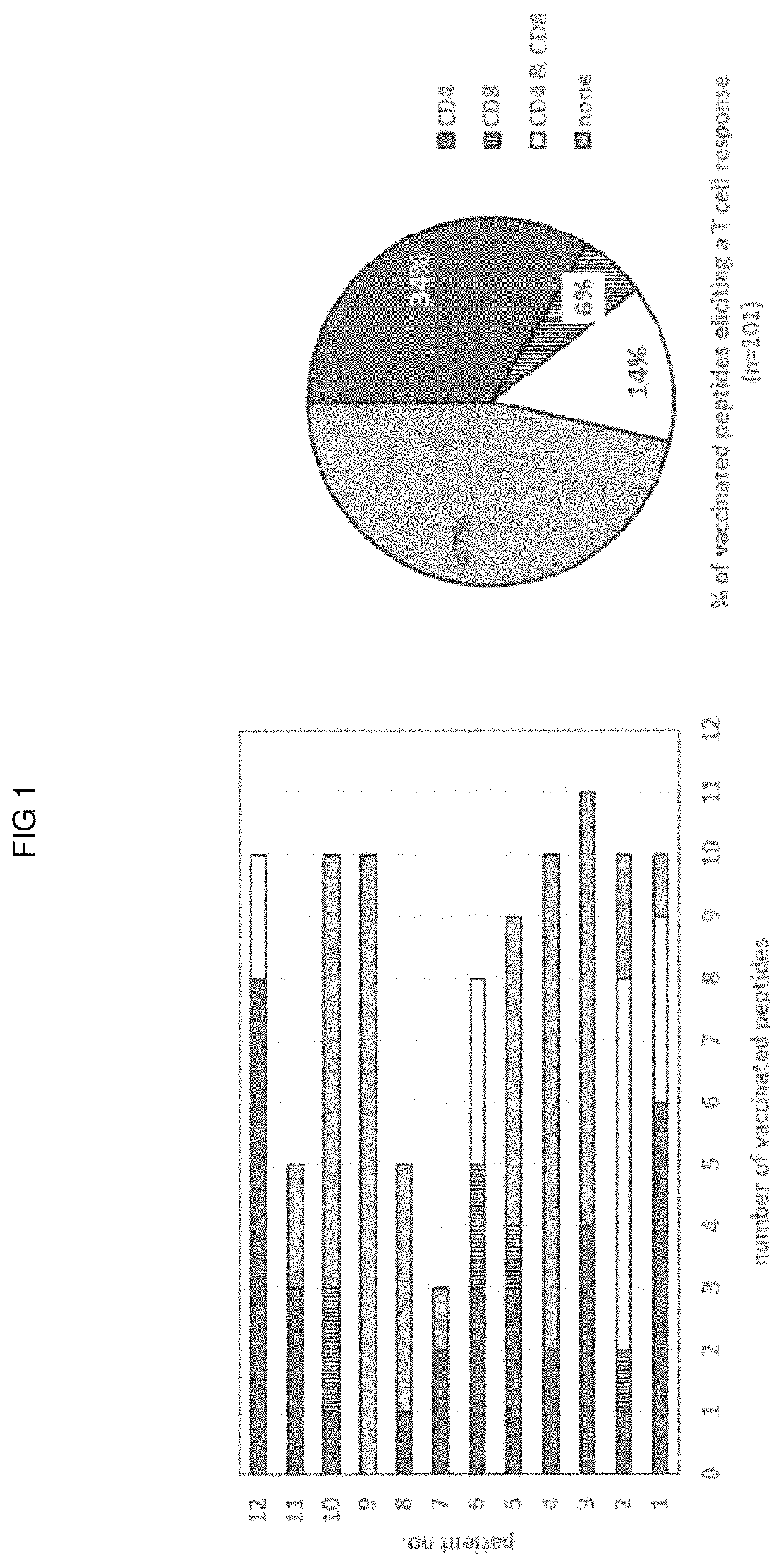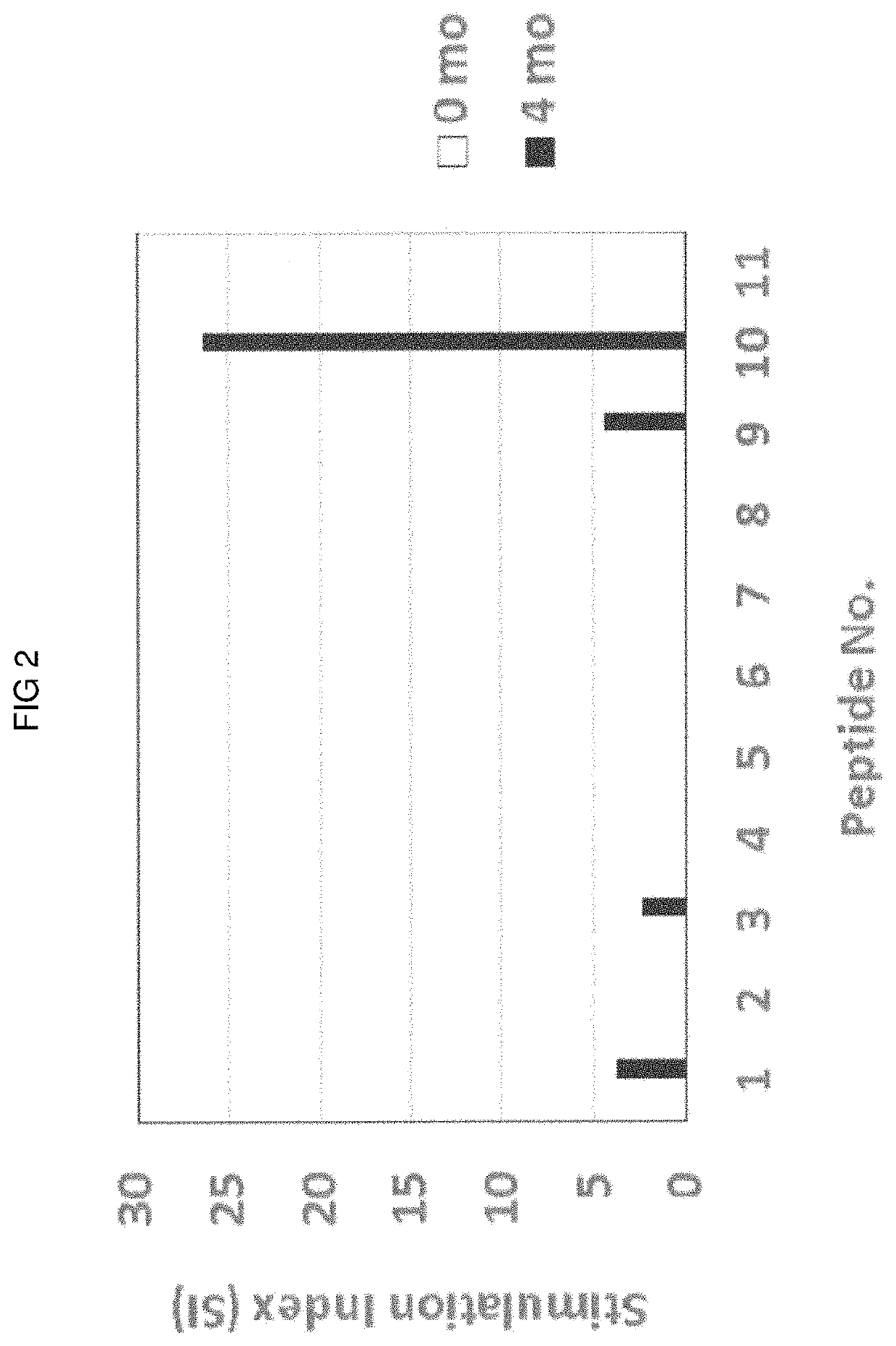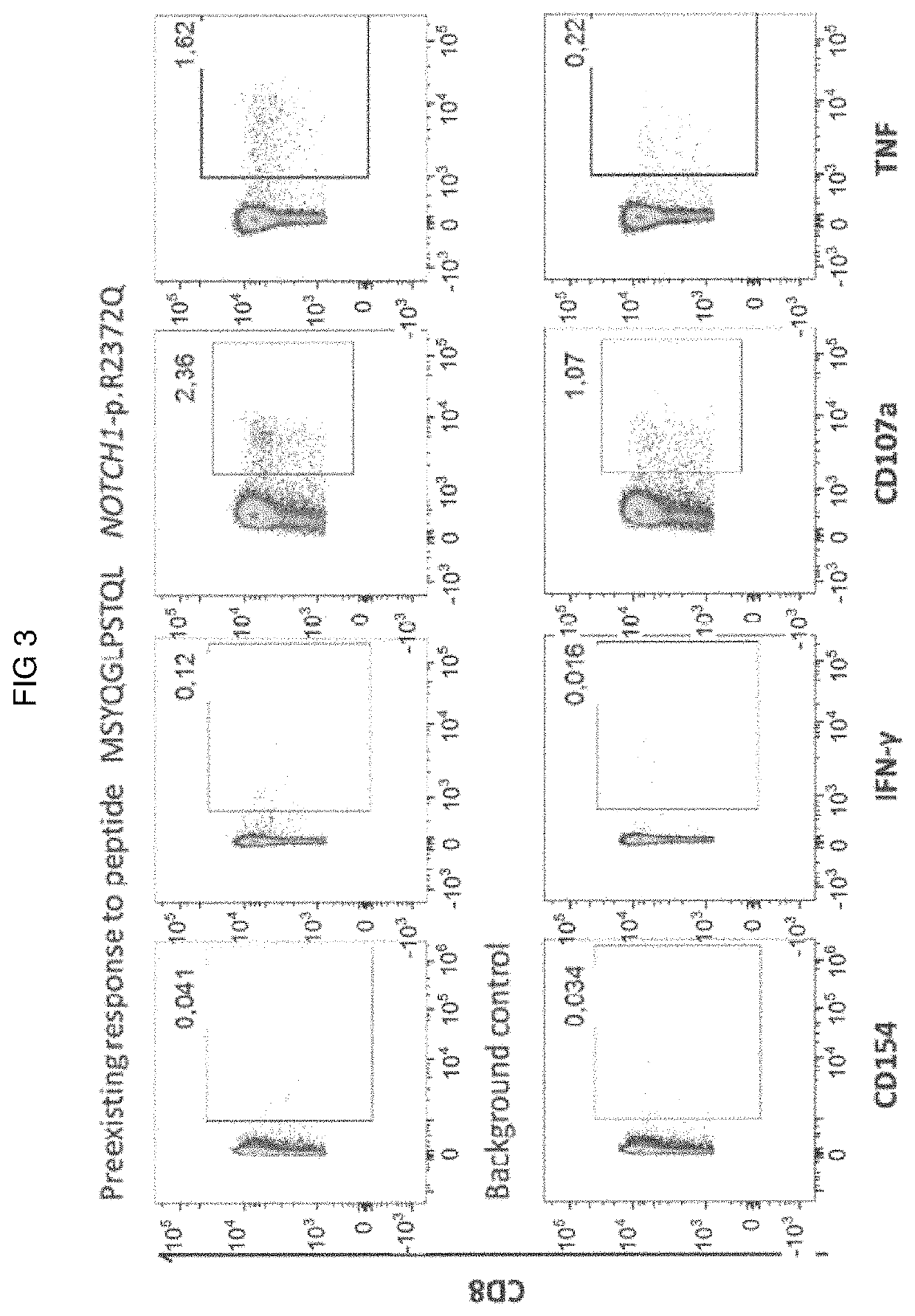Methods for selecting tumor-specific neoantigens
- Summary
- Abstract
- Description
- Claims
- Application Information
AI Technical Summary
Benefits of technology
Problems solved by technology
Method used
Image
Examples
example 1
ethod Outline
[0116]Step 1: Determination of tumor-specific (passenger & driver) mutations by comparison of sequence data from tumor and normal tissue[0117]Non-synonymous Single Nucleotide Variants (SNV) and Multiple Nucleotide Variants (MNVs) in close proximity[0118]Indels (leading either to a few amino acid changes or to frame shifts and therefore to completely novel amino acid sequences)[0119]Fusion genes leading to novel antigens at the breakpoint[0120]Step 2: Definition of mutated peptides based on the mutations found in step 1 and their genomic sequence context.[0121]Step 3: Determination of patient's HLA class I and / or class II status[0122]For example, based on the exome data of normal tissue.[0123]Step 4: Identification of mutated peptides that are likely to be presented on the surface of tumor cells based on the list of mutated peptides from step 2 and the HLA status from step 3.[0124]This can be done for short peptides based on HLA class I status and / or for long peptides ba...
example 2
Method Outline for HLA-Class I Restricted Peptides with Expression Data
1. Input
[0157]1.1. Exome and transcriptome sequencing[0158]Somatic missense variants from the exome (non-synonymous single nucleotide variants, Indels, gene fusions)[0159]corresponding transcriptome data,[0160]Patient's HLA genotype (determined, for instance, from exome data of the patient's blood)[0161]1.2. Epitope generation and prediction of binding affinities[0162]Extraction of 8-11 nucleotides of genomic sequence around a variant position; integration of the variant into the wild-type sequence to generate the neoepitope sequence[0163]Computation of binding affinity using methods SYFPEITHI, netMHC, netMHCpan
2. Filtering
[0164]2.1. Filtering of neoepitopes according to the predicted HLA I binding affinity[0165]Exclude neoantigens with affinity>500 nM (netMHC / netMHCpan), [0166]2.2. Filtering of self-peptides (UniProtKB / Swiss-Prot HUMAN.fasta)[0167]2.3. Expression data[0168]keep if variant allele frequency (VAF)>...
example 3
Method Outline for HLA-Class II Restricted Peptides without Expression Data
1. Input
[0226]1.1. Exome sequencing[0227]Somatic missense variants (non-synonymous single nucleotide variants, Indels, gene fusions)[0228]1.2. Epitope generation[0229]Extraction of 17 nucleotides of genomic sequence around a variant position, with the variant positioned at the center. Generation of the neoepitope by integration of the variant into the wild-type sequence:[0230]Missense SNVs: 8+1+8=17 AA[0231]Insertions (of AA size x): 8-(x / 2 rounded down)+x+8-(x / 2 rounded down)=16 AA if x is equal; =17 AA if x is odd[0232]Deletions: 8 AA upstream and 8 AA downstream of deletion; if protein sequence of either site is [0233]Gene fusions: 8 AA upstream and 8 AA downstream of breaking point; if protein sequence of either site is
2. Filtering
[0234]2.1. Filtering of self-peptides[0235]2.2. Gene expression estimate[0236]Check expression of protein (alternatively RNA) by database search for respective tumor type (Prot...
PUM
| Property | Measurement | Unit |
|---|---|---|
| Frequency | aaaaa | aaaaa |
| Hydrophobicity | aaaaa | aaaaa |
| Affinity | aaaaa | aaaaa |
Abstract
Description
Claims
Application Information
 Login to View More
Login to View More - R&D
- Intellectual Property
- Life Sciences
- Materials
- Tech Scout
- Unparalleled Data Quality
- Higher Quality Content
- 60% Fewer Hallucinations
Browse by: Latest US Patents, China's latest patents, Technical Efficacy Thesaurus, Application Domain, Technology Topic, Popular Technical Reports.
© 2025 PatSnap. All rights reserved.Legal|Privacy policy|Modern Slavery Act Transparency Statement|Sitemap|About US| Contact US: help@patsnap.com



